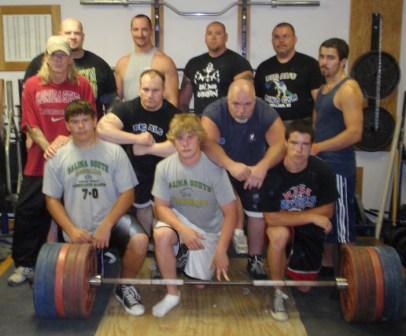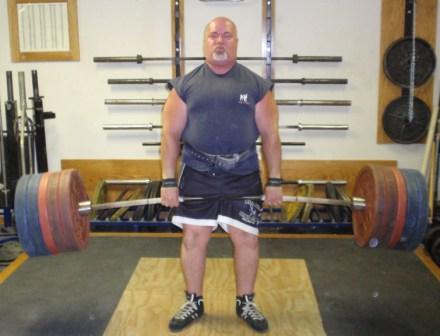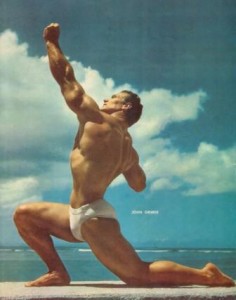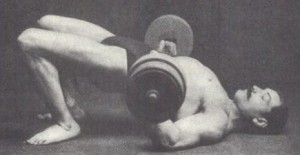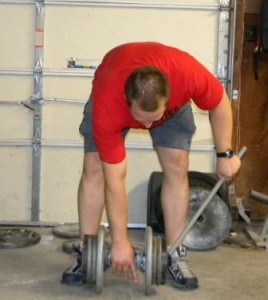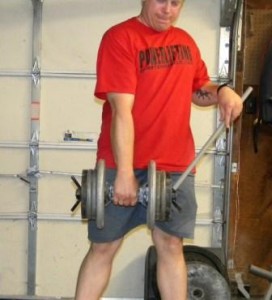Tuesday Night at the Dino Gym
by Al Myers
“Man – I love Tuesday nights!!” That is my feeling every Tuesday night at the Dino Gym, because that is our club’s big group workout night of the week. EVERYONE tries to make Tuesday night to train. The Dino Gym is a club gym, and membership is by invitation only. We probably have 30 plus members that train at the gym at least once per month, and many more who live a ways off and just show up for a workout every now and then. It is a “key gym” – meaning that each member gets a key that allows them to train when it is convenient for them, sometimes with another gym member and sometimes by themselves. I often do several of my workouts by myself in the early mornings before work. Occasionally, others are on the same schedule and I get someone to train with, but not always. The Dino Gym caters to several aspects of strength training. We have powerlifters, highland game throwers, olympic lifters, strongmen competitors, and of course my lifting interest, All-Round Weightlifting. It is quite interesting just watching the different gym members train – everyone has a different training focus and routine. Most all members are actively competing in a strength sport and different members are always preparing for an upcoming competition. There is NEVER down time in the Dino Gym!
But Tuesday nights we all come together and train as a group for a workout. I “hit the gym” around five, and often don’t leave till things are “wrapped up” which often is as late as ten. Some guys come early and leave early, while others come a little later and finish later. I like to be part of ALL OF IT!! The problem is that when I’m in the gym I want to train, so I keep doing more and more until everyone’s done and I’m totally wiped out! Four to five hours of continuous training is seldom recommended by ANYONE, and I can just imagine the “experts” would say I am over-training. But I have done this for years and seem to never tire of it, and always look forward to Tuesdays. One thing it does for me is build up my training endurance, which I feel helps me on days of competition. A long day of competition is nothing compared to what I put myself through weekly on Tuesday nights.
One of the things that makes me love “Tuesday Nights” is the hard-nosed, all-out training that is going on. There seems to be energy and excitement in the air, and it is contagious! Everyone in the weight-room has one unified purpose – and that is to get stronger. If you are interested in doing a sissy workout, the Dino Gym is not the place to hang out at. We don’t ALLOW anyone to “take it easy” on Tuesday nights – if YOU don’t know how to train hard we’ll introduce you to 20 rep squat sets or some timed deadlift singles. I find myself “feeding” on everyone’s training intensity and I just want to push myself all the harder. Watching efforts like Scott hitting set after set in time squats with over 400 pounds, Chuck hitting heavy sets of 5 in the deadlifts, and Mark using weights over 500 pounds in the Zercher Harness Lift provides visual motivation more than words would ever do. I lift harder than I would by myself, mainly because I don’t want to let the guys down.
As I said the Dino Gym has a very diverse group of members. We have members who have been around forever, like founding members Mark Mitchell and Chuck Cookson, to young men just getting started, like Tyler and Matt and several others. We have inexperienced lifters just getting started, and we have VERY advanced competitors, like professional strongman John Conner. Everyone helps everyone get stronger. That is what the Dino Weightlifting Club is all about.
